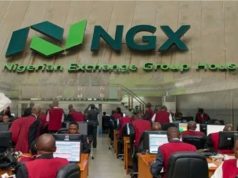By Arize Nwobu
WED 23 JUNE, 2021-theGBJournal-Manufacturing is the very essence of the secondary sector of the economy. It entails the production of goods through the use of labour, machines and tools and in other ways. It helps in the modernization of agriculture, which is primary and foundational in economic growth and development.
Manufacturing leads to urbanization, job creation and eradication of poverty. It feeds aggregate demand, enhances standard of living of the people and is also noted to be the most important cause of economic growth.
Experts have noted that manufacturing has the highest employment ‘’multiplier’’ effect for the domestic economy. Multiplier effect is the proportional amount of increase or decrease in final income that results from, and injection, or withdrawal of spending. They professed that each $1 worth of goods manufactured creates another $1.3. And that no nation could emerge as economic power without manufacturing.
There are three stages in the concentric rings of economic growth and development, namely, factor-driven stage, efficiency-driven stage and innovation-driven stage. Factor-driven economies depend mostly, and compete on the basis of raw materials and unskilled labour. Efficiency-driven economies compete on the basis of more efficient production processes while Innovation-driven economies compete on the basis of intensive research and innovations.
Economies are supposed to develop and migrate through the various stages. Most advanced economies started as factor-driven and developed through the efficiency stage to the innovation stage. As they progressed, agriculture and natural resources contributed a smaller per cent of their national income. They earned more from the value chains and exports.
Top five manufacturing nations are China, USA, Germany, Japan and India. China is noted as the ‘’world factory’’. It overtook USA in 2010 and account for 30 per cent of global manufacturing, but it was projected that USA would overtake China in 2020.
Some of China’s top industries are consumer goods and services, technology, specialist engineering, industrial machinery. Others include gas and chemicals, infrastructure, water supply, sewerage etc.USA imports from China totaled $539.5 billion in 2018 as against $340 billion in 2017. Also in 2018, US imports from China accounted for 21` per cent of overall US imports.
India witnessed a big push. It jumped from the 11th position in 2016 into the 5th spot. It is noted as the third biggest economy in buying power parity after USA and China, and has a huge populace of designers and assembly line labourers and with a ‘’regarded licensed innovation.’’
Experts have noted that competitiveness in manufacturing is enhanced by investments in high skills, innovation ability, research and development, funding and putting resources into top colleges.
Nigeria has potential to emerge as the manufacturing hub of Africa. But presently, South Africa is it. South Africa is an efficiency-driven economy. It is technologically advanced with top grade infrastructure and well established financial markets. South Africa exports vehicles, machinery including computers, transportation equipment, iron and steel, diamond, gold etc.
Manufacturing in Nigeria is dominated by the production of cement and building materials, food and beverages, fertilizers, textiles, wood etc. But it has been noted that out of all, only three account for 77 per cent of manufacturing output generating the greatest value. Nigeria’s economy is still largely factor-driven, with exports dominated by crude oil, refined petroleum,petroleum gas, cocoa beans, tobacco, beverages, processed leather, spirits, etc.
Problems of manufacturing in Nigeria include poor infrastructure, power, irregular taxes, poor business development, disinterest in listing companies on the stock exchange and inadequate funding.
But the efforts of Central Bank of Nigeria (CBN) in bridging the funding gap are commendable. In 2019, CBN established the Real Sector Support Facility (RSSF) which made it possible for manufacturing and agriculture to get funds at a single-digit interest rate of 9 per cent for up to ten years and with a moratorium of two years.
Also, it mandated banks to increase their loan-to-deposit ratios or risk a fine. The development triggered greater credit inflow to the manufacturing sector. Lending to manufacturing companies totaled N459.7 billion ($1.3 billion) from May- October 2019, said to be the highest in two decades.
In 2020, CBN set up a N1trillion facility which aim at supporting growth and expansion of manufacturing firms. According to CBN Governor, Godwin Emefiele, about N300 billion of the amount had been disbursed to 76 manufacturing firms.
The World Bank recently commended the development finance initiatives of CBN and noted as follows: ‘’ Thus far, the CBN’s policy initiatives and development finance interventions have helped prevent a severe credit crunch in the private sector. The CBN cut its monetary policy rate by 100 bps in May 2020 and by another in September.
‘’Regulatory forebearance for the restructuring of pandemic-affected exposures is now in effect until 2022. The CBN has softened the terms of its development finance interventions, and the new terms have been extended through March 2022; it has also launched a range of new development finance initiatives at subsidized interest rates in an attempt to ease the impact of Covid-19 on households and SMEs.
‘’It is also helping pharmaceutical companies, health practitioners, and SMEs respond to the pandemic by injecting up to N400 billion in loanable funds. The new funding is equivalent to about two per cent of private sector bank credit.’’
Nwobu is a Chartered Stockbroker and Business Journalist. He wrote via arizenwobu@yahoo.co. Tel. 08033021230.
Twitter-@theGBJournal|Facebook-The Government and Business Journal|email: govandbusinessj@gmail.com









